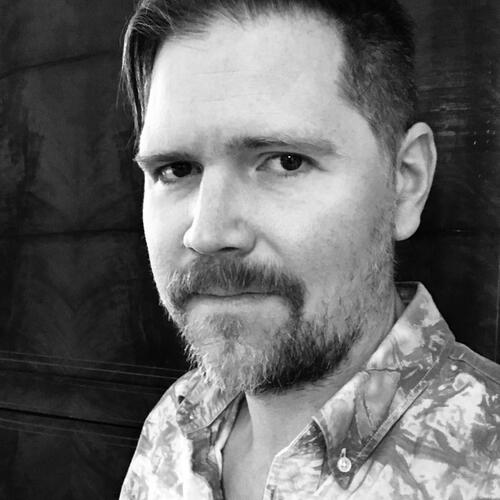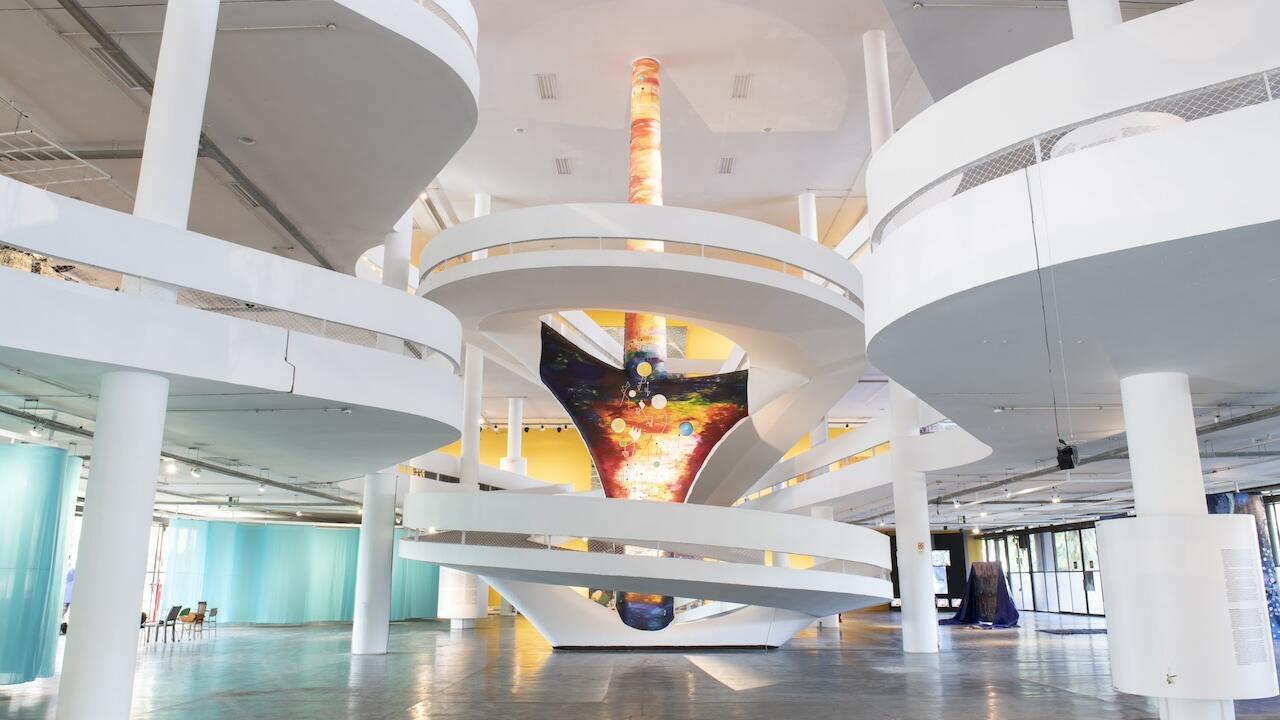The Erotic Topologies of Zilia Sánchez
Body and landscape converge in the groundbreaking painter’s first US retrospective at the Phillips Collection, Washington, DC
Body and landscape converge in the groundbreaking painter’s first US retrospective at the Phillips Collection, Washington, DC

Zilia Sánchez recently remarked that ‘although the ocean is not in my work, it is in my soul, in my feelings.’ This was fitting for the occasion of her first retrospective in the continental United States, which draws together seven decades of work in a presentation at once sweeping and concise. The material on view is suffused with marine tones and, while not explicitly referential, charts many transoceanic passages in several keys.
The show’s title, ‘Soy Isla,’ is layered in meaning. As curator Vesela Sretenović related on a tour of the space, the sense of being an island – a discrete entity in a vast seascape, autonomous and contingent all at once – is emblematic of Sánchez’s approach to politics, achieved with the implements of a poet rather than an activist. More literally, her own course has tacked from island to island: born in Havana in 1926, she travelled during the 1950s and their years of revolution, ultimately alighting on New York City at the apex of hard-edged abstraction before relocating to San Juan, Puerto Rico in 1971, where she remains.

‘Soy Isla’ also transmits a sense of floating amid the many currents of 20th-century abstraction. A suite of paintings in the second gallery demonstrates Sánchez’s immersion in Cuban modernist circles of the 1940s and ‘50s – Wilfredo Lam was a touchstone, and Sánchez was included in the 1959 São Paulo Biennial. Her delicate linear arrays of ink on canvas also call to mind the kinetic sculpture of her contemporary Gego, or the strange surrealist paintings that predominated in her youth.
Sánchez looked to Europe, too – especially to Pablo Picasso and Antoni Tàpies – and she experimented with the rough textures of the Art Informel before arriving, around 1960, at her signature method: geometric colour fields as canvas ‘skins’, overlaid on wooden endoskeletons. The poet Severo Sarduy dubbed these ‘erotic topologies’: an apt name for armatures at once taut and serene. They radiate with surface tension on the verge of disruption, as in a figure slowly emerging from a still pond.
These ‘topologies’, many made during the 1960s in New York, are reliefs – suspended, framed and protuberant. In this sense, they are plainly in dialogue with minimalist concepts then in vogue, such as medium specificity and the use of ‘real space’. Yet the decade was a welter of performance and activism, and abstraction was put to heterodox uses. Untitled (1962/90), less than a metre wide with its subtle, arched projection, gestures towards the ‘primary structures’ of minimalism, but opens on to a stranger set of possibilities, where body and landscape seem to converge.

It would be easy to mistake Sánchez, on the basis of her abstraction or her serial repetitions, as another post-painterly formalist. The exhibition brings together scores of ‘topologies’ from a range of collections that demonstrate Sánchez’s persistent and patient refinement of method, including show stoppers such as Lunar con tatuaje (1968/1996), a tondo diptych inscribed with sinuous line like a tattoo on pliable flesh. Yet Sánchez was connected to other exiles, and opted to channel her political engagements in other ways: illustrating or designing short-lived partisan journals and, ultimately, leaving New York altogether for what was then a remote outpost, barely legible to the art world. ‘Soy Isla’ is rich in documentation of both periods in her career, allowing the range and sensitivity of Sánchez’s practice to come into focus.
‘Soy Isla’ is at once long overdue and timely. Sánchez was featured at the 2017 Venice Biennale, and her studio in Puerto Rico was badly damaged by Hurricane Maria in 2018. Even more, it is fitting for a place that bills itself as America’s ‘first museum of modern art’ to undo the pieties of that history, especially at a moment when Washington and San Juan – both American cities – seem worlds apart.
Main Image: Zilia Sánchez, Amazonas (Amazons), 1978, acrylic on stretched canvas. Courtesy: The Phillips Collection, Washington, DC























